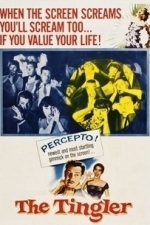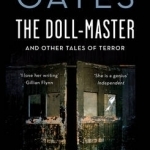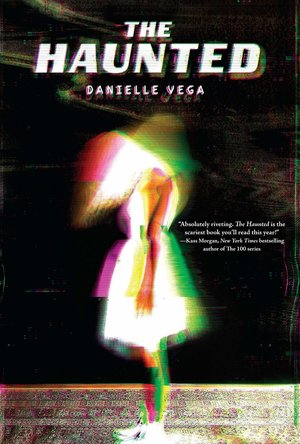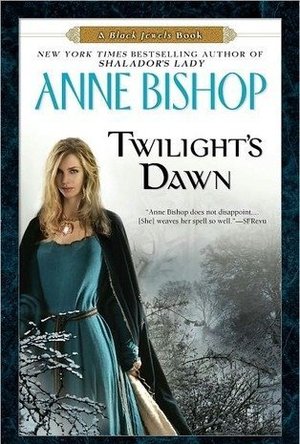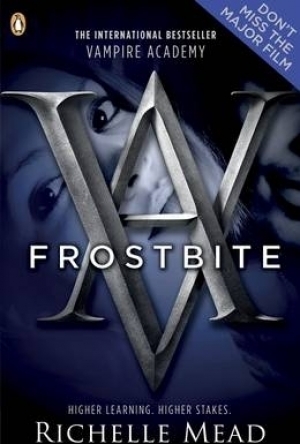Search
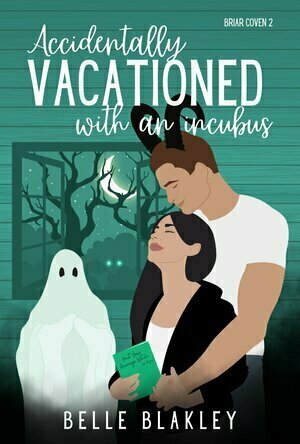
Accidentally Vacationed with an Incubus (Briar Coven, #2)
Book
He wants a connection. She wants him gone. A steamy bargain changes everything. When 27-year-old...
Romance Urban Fantasy Witches Monster Romance
Gareth von Kallenbach (980 KP) rated Goosebumps 2: Haunted Halloween (2018) in Movies
Jul 2, 2019
When best friends Sonny (Jeremy Ray Taylor) and Sam (Caleel Harris) find a hidden room, in a spooky old house, they think they have just stumbled upon a treasure. This is exactly they were hoping for when they started a junk removal business. But those hopes are quickly dashed as they discover what they really have found is an unreleased and unfinished R.L. Stine novel. The book is locked so they unlock it hoping to find a treasure map or some money but alas it is just a book by an author they have never heard of. Disappointed they return to the rest of the items they found and is surprised to see a ventriloquist dummy sitting next to the book. In the pocket of the dummy is a card that says its name is Slappy (voiced by Jack Black). Unknowingly these two friends have now unleashed a malicious that is about to unleash a bevy of monsters on their home town. Now they, with the help of Sonny’s older sister Sarah (Madison Iseman), have to try to stop Slappy from destroying their town and maybe even the world, especially before Sonny and Sarah’s mom (Wendy McLendon-Covey) finds out.
This film is a follow up to the 2015 Goosebumps, all based on the popular children’s horror fiction novels of the same name by author R.L. Stine. The book series, over 60 novels, and the films are all geared to bring horror to a younger audience.
Goosebumps 2: Haunted Halloween is a lighthearted horror film. This will probably do well with a young audience but doesn’t really go beyond that. I thought for the genre the cast did okay. Ken Jeong as the wacky neighbor was very over the top but in a fun way. Even though Jack Black is the voice of Slappy his R.L. Stine character was mostly missing from the film. The story is predictable. The film is full of cheesy one liners, some good, some bad and some so bad they might be good. Also if you are looking for a well put together plot with streamlined scenes this is not the film. At one point the three teens are being helped by Jeong’s character but the scene cuts and the kids are alone with no mention of their neighbor. I thought that the Slappy character was definitely creepy at times and could be nightmare inducing but the rest of the monsters were more cartoon like that really scary.
Of films made for young audiences this I have seen recently this is not one of the better films. I would say that it had a few moments but really lacked a clear message and cohesive story. I think it would be something young audience would enjoy but not go back to as often as other films that have come out recently. Renting or streaming would be the way to go for this film not worth the ticket price for the theaters for me.
This film is a follow up to the 2015 Goosebumps, all based on the popular children’s horror fiction novels of the same name by author R.L. Stine. The book series, over 60 novels, and the films are all geared to bring horror to a younger audience.
Goosebumps 2: Haunted Halloween is a lighthearted horror film. This will probably do well with a young audience but doesn’t really go beyond that. I thought for the genre the cast did okay. Ken Jeong as the wacky neighbor was very over the top but in a fun way. Even though Jack Black is the voice of Slappy his R.L. Stine character was mostly missing from the film. The story is predictable. The film is full of cheesy one liners, some good, some bad and some so bad they might be good. Also if you are looking for a well put together plot with streamlined scenes this is not the film. At one point the three teens are being helped by Jeong’s character but the scene cuts and the kids are alone with no mention of their neighbor. I thought that the Slappy character was definitely creepy at times and could be nightmare inducing but the rest of the monsters were more cartoon like that really scary.
Of films made for young audiences this I have seen recently this is not one of the better films. I would say that it had a few moments but really lacked a clear message and cohesive story. I think it would be something young audience would enjoy but not go back to as often as other films that have come out recently. Renting or streaming would be the way to go for this film not worth the ticket price for the theaters for me.
Matthew Krueger (10051 KP) rated The Tingler (1959) in Movies
Dec 5, 2020
Vincent Price (1 more)
William Castle
When You Scream
The Tingler- is a excellent movie and if you havent watched it than go watch it.
The plot: Dr. Warren Chapin (Vincent Price) has made a surprising discovery -- the spine-chilling sensation that people get when scared is due to a parasite that he dubs the "tingler." Chapin concludes that in extreme circumstances, prolonged fear can cause the creature to damage a person's spine and even cause death if the victim can't scream, a theory that Oliver Higgins (Philip Coolidge) uses to deadly effect on his wife (Judith Evelyn). Soon the tingler that killed the woman is on the loose.
Castle used gimmicks to sell the film. The Tingler remains most well known for a gimmick called "Percepto!", a vibrating device in some theater chairs which activated with the onscreen action.
In a similar manner as Universal's Frankenstein (1931), Castle opened the film with an on-screen warning to the audience:
"I am William Castle, the director of the motion picture you are about to see. I feel obligated to warn you that some of the sensations—some of the physical reactions which the actors on the screen will feel—will also be experienced, for the first time in motion picture history, by certain members of this audience. I say 'certain members' because some people are more sensitive to these mysterious electronic impulses than others. These unfortunate, sensitive people will at times feel a strange, tingling sensation; other people will feel it less strongly. But don't be alarmed—you can protect yourself. At any time you are conscious of a tingling sensation, you may obtain immediate relief by screaming. Don't be embarrassed about opening your mouth and letting rip with all you've got, because the person in the seat right next to you will probably be screaming too. And remember—a scream at the right time may save your life."
William Castle was famous for his movie gimmicks, and The Tingler featured one of his best: "Percepto!". Previously, he had offered a $1,000 life insurance policy against "Death by Fright" for Macabre (1958) and sent a skeleton flying above the audiences' heads in the auditorium in House on Haunted Hill (1959).
"Percepto!" was a gimmick where Castle attached electrical "buzzers" to the underside of some seats in theaters where The Tingler was screened. The buzzers were small surplus airplane wing deicing motors left from World War II. The cost of this equipment added $250,000 to the film's budget. It was used predominantly in larger theaters.
During the climax of the film, The Tingler was unleashed in the movie theater, while the audience watched Tol'able David (1921), in which a young woman escapes the unwanted advances of her boyfriend and is targeted. In the real-life theater, a woman screamed and then pretended to faint; she was then taken away in a stretcher, all part of the show arranged by Castle. From the screen, the voice of Price mentioned the fainted lady and asked the rest of the audience to remain seated. The film-within-a-film resumed and was interrupted again. The projected film appeared to break as the silhouette of the tingler moved across the projection beam. The image of the film went dark, all lights in the auditorium (except fire exit signs) went off, and Price's voice warned the audience, "Ladies and gentlemen, please do not panic. But scream! Scream for your lives! The tingler is loose in this theater!" This cued the theater projectionist to activate the Percepto! buzzers, giving some audience members an unexpected jolt, followed by a highly visible physical reaction. The voices of scared patrons were heard from the screen, replaced by the voice of Price, who explained that the tingler was paralyzed and the danger was over. At this point, the film resumed its normal format, which was used for its epilogue
An alternate warning was recorded for drive-in theaters; this warning advised the audience the tingler was loose in the drive-in. Castle's voice was substituted for Price's in this version.
Castle's autobiography, Step Right Up!: I'm Gonna Scare the Pants off America, erroneously stated that "Percepto!" delivered electric shocks to the theater seats.
To enhance the climax even more, Castle hired fake "screamers and fainters" planted in the audience There were fake nurses stationed in the foyer and an ambulance outside of the theater. The "fainters" would be carried out on a gurney and whisked away in the ambulance, to return for the next showing.
Although The Tingler was filmed in black-and-white, a short color sequence was spliced into the film. It showed a sink (in black-and-white) with bright-red "blood" flowing from the taps and a black-and-white Evelyn watching a bloody red hand rising from a bathtub, likewise filled with the bright red "blood". Castle used color film for the effect. The scene was accomplished by painting the set white, black and gray and applying gray makeup to the actress to simulate monochrome.
Excellent Film.
The plot: Dr. Warren Chapin (Vincent Price) has made a surprising discovery -- the spine-chilling sensation that people get when scared is due to a parasite that he dubs the "tingler." Chapin concludes that in extreme circumstances, prolonged fear can cause the creature to damage a person's spine and even cause death if the victim can't scream, a theory that Oliver Higgins (Philip Coolidge) uses to deadly effect on his wife (Judith Evelyn). Soon the tingler that killed the woman is on the loose.
Castle used gimmicks to sell the film. The Tingler remains most well known for a gimmick called "Percepto!", a vibrating device in some theater chairs which activated with the onscreen action.
In a similar manner as Universal's Frankenstein (1931), Castle opened the film with an on-screen warning to the audience:
"I am William Castle, the director of the motion picture you are about to see. I feel obligated to warn you that some of the sensations—some of the physical reactions which the actors on the screen will feel—will also be experienced, for the first time in motion picture history, by certain members of this audience. I say 'certain members' because some people are more sensitive to these mysterious electronic impulses than others. These unfortunate, sensitive people will at times feel a strange, tingling sensation; other people will feel it less strongly. But don't be alarmed—you can protect yourself. At any time you are conscious of a tingling sensation, you may obtain immediate relief by screaming. Don't be embarrassed about opening your mouth and letting rip with all you've got, because the person in the seat right next to you will probably be screaming too. And remember—a scream at the right time may save your life."
William Castle was famous for his movie gimmicks, and The Tingler featured one of his best: "Percepto!". Previously, he had offered a $1,000 life insurance policy against "Death by Fright" for Macabre (1958) and sent a skeleton flying above the audiences' heads in the auditorium in House on Haunted Hill (1959).
"Percepto!" was a gimmick where Castle attached electrical "buzzers" to the underside of some seats in theaters where The Tingler was screened. The buzzers were small surplus airplane wing deicing motors left from World War II. The cost of this equipment added $250,000 to the film's budget. It was used predominantly in larger theaters.
During the climax of the film, The Tingler was unleashed in the movie theater, while the audience watched Tol'able David (1921), in which a young woman escapes the unwanted advances of her boyfriend and is targeted. In the real-life theater, a woman screamed and then pretended to faint; she was then taken away in a stretcher, all part of the show arranged by Castle. From the screen, the voice of Price mentioned the fainted lady and asked the rest of the audience to remain seated. The film-within-a-film resumed and was interrupted again. The projected film appeared to break as the silhouette of the tingler moved across the projection beam. The image of the film went dark, all lights in the auditorium (except fire exit signs) went off, and Price's voice warned the audience, "Ladies and gentlemen, please do not panic. But scream! Scream for your lives! The tingler is loose in this theater!" This cued the theater projectionist to activate the Percepto! buzzers, giving some audience members an unexpected jolt, followed by a highly visible physical reaction. The voices of scared patrons were heard from the screen, replaced by the voice of Price, who explained that the tingler was paralyzed and the danger was over. At this point, the film resumed its normal format, which was used for its epilogue
An alternate warning was recorded for drive-in theaters; this warning advised the audience the tingler was loose in the drive-in. Castle's voice was substituted for Price's in this version.
Castle's autobiography, Step Right Up!: I'm Gonna Scare the Pants off America, erroneously stated that "Percepto!" delivered electric shocks to the theater seats.
To enhance the climax even more, Castle hired fake "screamers and fainters" planted in the audience There were fake nurses stationed in the foyer and an ambulance outside of the theater. The "fainters" would be carried out on a gurney and whisked away in the ambulance, to return for the next showing.
Although The Tingler was filmed in black-and-white, a short color sequence was spliced into the film. It showed a sink (in black-and-white) with bright-red "blood" flowing from the taps and a black-and-white Evelyn watching a bloody red hand rising from a bathtub, likewise filled with the bright red "blood". Castle used color film for the effect. The scene was accomplished by painting the set white, black and gray and applying gray makeup to the actress to simulate monochrome.
Excellent Film.
Louise (64 KP) rated The Doll-Master and Other Tales of Horror in Books
Jul 2, 2018
I will write a sentence or two about each story in the book but not too much as I don’t want to give anything away and spoil your enjoyment of the book.
The Doll – Master: Robbie’s cousin Amy passes away from Leukemia at a very early age. Stealing Amy’s doll is the start of his obsession and begins collecting more throughout his life. His collection includes china, wooden and even barbie dolls which he keeps in a deserted part of the house, however they are not just any old dolls.
I gave this story 3 stars, it was eerie and disturbing and more of a psychological read but for me this one just wasn’t the best. It seemd too predictable
Soldier: Brendan Schrank is up on trial for shooting a black teenager, his story is that it was self-defence. There are gangs that roam the streets and he has stolen his Uncle’s shotgun for security reasons. This story follows Brendan, the trial and his journey.
I also gave this story 3 stars – I liked this story, it was thought-provoking and I am so glad that gun’s are not really a thing in the UK. It also shows how people can become paranoid about going outside with teenagers and gangs. This story is controversial as it deals with racism.
Gun Accident: This is Hanna’s story told 26 years after the gun accident. Hanna was asked by her teacher to house and cat sit whilst she went to her husband’s bedside. The teacher lives in a well to-do part of town with a large house and pays Hanna generously for her troubles, however not everything goes to plan when she gets an unexpected visitor.
This was a 4 star read for me, I really enjoyed the writing and the story. I would class this more of a thriller than a horror story though. I also felt a connection with the character, who likes being home alone? Especially when it’s not your familiar surroundings and your sense are elevated, you hear every little thing and your imagination runs wild…. Just me? Ok then…moving on.
Equatorial:Audrey is currently on holiday with her husband in the Galapagos islands, the trip involves hiking which she is not so keen on but does it for love. Her husband is older but adventurous and likes to travel. Audrey feels like she is constantly letting her husband down as this isn’t really her thing. During the trip Audrey gets this niggling suspicion her husband doesn’t want her there and that there is a possibility there is another woman
This was a 4 stars for me, I really connected with Audrey – I felt sorry for her, clearly grief stricken that her husband no longer loves her and is having an affair. She was a very likeable character.
Big Momma: Violet is the new girl in town and is trying to make friends, This town has a bit of a reputation for animals and children going missing, however undeterred Violet befriends Rita Mae and starts going round her house for dinner. Violets mum is hardly at home, either working or out drinking so she spends a lot of time with the family. She feels like she fits in and would rather love with them but they are not what they are made up to be.
5 stars – best story in the book for me. It was very creepy, the father in this story made me cringe a lot. Violet just wanted to fit in, being overweight and the new girl in school she was happy to be excepted by Rita Mae’s family.
Mystery Inc: A young tradesman comes across an elegant bookshop with rare books and antiques, he falls in love with the shop and must find a way to be the next proprietor.
4 stars – who doesn’t like a story about books and bookstores? I know I do! It was slow-paced but interesting and gripping read.
These stories were truly gripping, I have never read anything from this author before and was not let down. These are not so much as horror but definitely eerie and individual. The pace of the stories are slow, so if you want something quick with lots of action these are not the stories for you. If you are looking for reads with endings that will shock you this is not the book for you! Oates writing is amazing, as the stories went on I became more accustomed to her style and ended up really enjoying myself. All the stories are open-ended, I am not usually a fan of these sort of stories, I like closure and knowing what’s what. But then I started to think about the story and the characters for myself and realised that I could end the story how I wanted to it to end.
I will definitely be reading some more of Oates works, if anyone has read any that they recommend please let me know as I would be really interested.
Overall I rated this book 4 out of 5 stars.
The Doll – Master: Robbie’s cousin Amy passes away from Leukemia at a very early age. Stealing Amy’s doll is the start of his obsession and begins collecting more throughout his life. His collection includes china, wooden and even barbie dolls which he keeps in a deserted part of the house, however they are not just any old dolls.
I gave this story 3 stars, it was eerie and disturbing and more of a psychological read but for me this one just wasn’t the best. It seemd too predictable
Soldier: Brendan Schrank is up on trial for shooting a black teenager, his story is that it was self-defence. There are gangs that roam the streets and he has stolen his Uncle’s shotgun for security reasons. This story follows Brendan, the trial and his journey.
I also gave this story 3 stars – I liked this story, it was thought-provoking and I am so glad that gun’s are not really a thing in the UK. It also shows how people can become paranoid about going outside with teenagers and gangs. This story is controversial as it deals with racism.
Gun Accident: This is Hanna’s story told 26 years after the gun accident. Hanna was asked by her teacher to house and cat sit whilst she went to her husband’s bedside. The teacher lives in a well to-do part of town with a large house and pays Hanna generously for her troubles, however not everything goes to plan when she gets an unexpected visitor.
This was a 4 star read for me, I really enjoyed the writing and the story. I would class this more of a thriller than a horror story though. I also felt a connection with the character, who likes being home alone? Especially when it’s not your familiar surroundings and your sense are elevated, you hear every little thing and your imagination runs wild…. Just me? Ok then…moving on.
Equatorial:Audrey is currently on holiday with her husband in the Galapagos islands, the trip involves hiking which she is not so keen on but does it for love. Her husband is older but adventurous and likes to travel. Audrey feels like she is constantly letting her husband down as this isn’t really her thing. During the trip Audrey gets this niggling suspicion her husband doesn’t want her there and that there is a possibility there is another woman
This was a 4 stars for me, I really connected with Audrey – I felt sorry for her, clearly grief stricken that her husband no longer loves her and is having an affair. She was a very likeable character.
Big Momma: Violet is the new girl in town and is trying to make friends, This town has a bit of a reputation for animals and children going missing, however undeterred Violet befriends Rita Mae and starts going round her house for dinner. Violets mum is hardly at home, either working or out drinking so she spends a lot of time with the family. She feels like she fits in and would rather love with them but they are not what they are made up to be.
5 stars – best story in the book for me. It was very creepy, the father in this story made me cringe a lot. Violet just wanted to fit in, being overweight and the new girl in school she was happy to be excepted by Rita Mae’s family.
Mystery Inc: A young tradesman comes across an elegant bookshop with rare books and antiques, he falls in love with the shop and must find a way to be the next proprietor.
4 stars – who doesn’t like a story about books and bookstores? I know I do! It was slow-paced but interesting and gripping read.
These stories were truly gripping, I have never read anything from this author before and was not let down. These are not so much as horror but definitely eerie and individual. The pace of the stories are slow, so if you want something quick with lots of action these are not the stories for you. If you are looking for reads with endings that will shock you this is not the book for you! Oates writing is amazing, as the stories went on I became more accustomed to her style and ended up really enjoying myself. All the stories are open-ended, I am not usually a fan of these sort of stories, I like closure and knowing what’s what. But then I started to think about the story and the characters for myself and realised that I could end the story how I wanted to it to end.
I will definitely be reading some more of Oates works, if anyone has read any that they recommend please let me know as I would be really interested.
Overall I rated this book 4 out of 5 stars.
Hadley (567 KP) rated The Haunted in Books
Jun 23, 2019
A lot of inconsistencies (1 more)
Stereo-typical characters
A murder begins the story of 'The Haunted,' where Vega starts with every parent's nightmare:
a little girl named Maribeth is killed in the cellar of the Steele House by an unseen force. We jump to three years later, where our main character, Hendricks, is moving into this house with her parents and baby brother- - - a family that is unaware of the murder that took place in the cellar. Vega does a wonderful job of steering the paranormal aspects away from the usual ones that most readers are used to. But although the story is good, the writing is poorly executed.
Starting with the teenaged girl Hendricks, she tells us that she refuses to be a stereo-type, but her first thoughts on the ride to school are of her ex-boyfriend, Grayson. But this is a young adult book, so a young girl obsessing over her ex is to be expected. Yet, when Hendricks gets to her new high school, she quickly begins to stereo-type everyone she meets by what they are wearing. Unfortunately, every character in this story, including Hendricks parents, are stereo-types. Eddie, who wears nothing but black clothing, is the outcast; Portia, who wears too short of skirts and too tight of shirts, is the makeup obsessed girly-girl; Raven, who tries to be funny, is the sporty best friend, and, Connor, who seems to be the only character that Vega tried to keep away from his stereo-type, is a friendly jock who loves his large family.
Readers learn early on that Hendricks' break-up with her ex, Grayson, was a traumatic event for her- - - as Hendricks releases more and more memories, it's soon easy to see that the relationship was an emotional abusive one; from Grayson telling her how to dress to him influencing the way she acted around other people, including who she was allowed to be around. In the middle of all this, Hendricks begins to learn the history of the Steele House, and we find out that Maribeth may not have been the only one murdered there. When Hendricks isn't trying to drink alcohol in almost every chapter, she begins experiencing strange things in the house, including one very similar to Maribeth's experience, but sadly, the paranormal aspect is the only good part of this book.
'The Haunted' could have been a great story, but there are so many inconsistencies, some even on the very next page. Such as, on page 44, Hendricks sees a singing doll waking up her baby brother inside his room (Vega literally states 'in the middle of his room'), but the very next page, Hendricks is suddenly scooping up the doll outside of her brother's room to put it away. On page 157, Hendricks is being pinned against a wall in the cellar by an unseen force, one of her arms is against her back, but suddenly she is able to use both hands to push off the wall, but it was never stated that her arm became unpinned.
One of Vega's biggest mistakes in 'The Haunted' was using the same handful of descriptions for emotions with every single character throughout the entire book. Such as, if a character was trying to make a decision, they always bit their lip; if a character was confused, they always furrowed their brow; if a character was embarrassed, they always had a reddening face. Vega never took advantage of other body language to convey these emotions, causing the story to come up short.
As I have said, the only good part of this book was the paranormal aspect, and the ghosts happen to be the only interesting characters. If I had to choose my favorite part of this story, I would have to choose when Eddie and Hendricks bring in the occult store owner, Ileana. Following this chapter, the best part of the paranormal aspects happen, but I don't want to spoil that for anyone who may want to read this. Vega is crafty in keeping up the suspense throughout this entire time, this is apparently where her strength in writing occurs. She amazingly describes scenes where readers can easily imagine them happening in reality. Her take on hauntings is one that is rarely seen and I think should be utilized in paranormal fiction more often.
'The Haunting' just didn't add up for me. It seems the story was written too hastily that beginning writer mistakes were made and overlooked, but most young adult readers may be able to look past this. Like Stephen King, Vega has great story-telling power in the horror genre, but in 'The Haunting,' I don't feel she was fully able to display this because the focus on Hendricks' life drama took over most of it. If I were to recommend this to anyone, I would only recommend it to people who like teenaged drama mixed in with a ghost story.
a little girl named Maribeth is killed in the cellar of the Steele House by an unseen force. We jump to three years later, where our main character, Hendricks, is moving into this house with her parents and baby brother- - - a family that is unaware of the murder that took place in the cellar. Vega does a wonderful job of steering the paranormal aspects away from the usual ones that most readers are used to. But although the story is good, the writing is poorly executed.
Starting with the teenaged girl Hendricks, she tells us that she refuses to be a stereo-type, but her first thoughts on the ride to school are of her ex-boyfriend, Grayson. But this is a young adult book, so a young girl obsessing over her ex is to be expected. Yet, when Hendricks gets to her new high school, she quickly begins to stereo-type everyone she meets by what they are wearing. Unfortunately, every character in this story, including Hendricks parents, are stereo-types. Eddie, who wears nothing but black clothing, is the outcast; Portia, who wears too short of skirts and too tight of shirts, is the makeup obsessed girly-girl; Raven, who tries to be funny, is the sporty best friend, and, Connor, who seems to be the only character that Vega tried to keep away from his stereo-type, is a friendly jock who loves his large family.
Readers learn early on that Hendricks' break-up with her ex, Grayson, was a traumatic event for her- - - as Hendricks releases more and more memories, it's soon easy to see that the relationship was an emotional abusive one; from Grayson telling her how to dress to him influencing the way she acted around other people, including who she was allowed to be around. In the middle of all this, Hendricks begins to learn the history of the Steele House, and we find out that Maribeth may not have been the only one murdered there. When Hendricks isn't trying to drink alcohol in almost every chapter, she begins experiencing strange things in the house, including one very similar to Maribeth's experience, but sadly, the paranormal aspect is the only good part of this book.
'The Haunted' could have been a great story, but there are so many inconsistencies, some even on the very next page. Such as, on page 44, Hendricks sees a singing doll waking up her baby brother inside his room (Vega literally states 'in the middle of his room'), but the very next page, Hendricks is suddenly scooping up the doll outside of her brother's room to put it away. On page 157, Hendricks is being pinned against a wall in the cellar by an unseen force, one of her arms is against her back, but suddenly she is able to use both hands to push off the wall, but it was never stated that her arm became unpinned.
One of Vega's biggest mistakes in 'The Haunted' was using the same handful of descriptions for emotions with every single character throughout the entire book. Such as, if a character was trying to make a decision, they always bit their lip; if a character was confused, they always furrowed their brow; if a character was embarrassed, they always had a reddening face. Vega never took advantage of other body language to convey these emotions, causing the story to come up short.
As I have said, the only good part of this book was the paranormal aspect, and the ghosts happen to be the only interesting characters. If I had to choose my favorite part of this story, I would have to choose when Eddie and Hendricks bring in the occult store owner, Ileana. Following this chapter, the best part of the paranormal aspects happen, but I don't want to spoil that for anyone who may want to read this. Vega is crafty in keeping up the suspense throughout this entire time, this is apparently where her strength in writing occurs. She amazingly describes scenes where readers can easily imagine them happening in reality. Her take on hauntings is one that is rarely seen and I think should be utilized in paranormal fiction more often.
'The Haunting' just didn't add up for me. It seems the story was written too hastily that beginning writer mistakes were made and overlooked, but most young adult readers may be able to look past this. Like Stephen King, Vega has great story-telling power in the horror genre, but in 'The Haunting,' I don't feel she was fully able to display this because the focus on Hendricks' life drama took over most of it. If I were to recommend this to anyone, I would only recommend it to people who like teenaged drama mixed in with a ghost story.
Rachel King (13 KP) rated Twilight's Dawn (The Black Jewels, #9) in Books
Feb 11, 2019
Anne Bishop's newest addition to the Black Jewels series is a collection of four novellas that fill in a few gaps in the growing storyline, as well as answering the question of what happens after certain central characters are gone from the series.
The first story, "Winsol Gifts", takes place a year after Daemon Sadi and Jaenelle Angelline have been married and after the events in Tangled Webs (Black Jewels, Book 6). It is a sweet story that explores Daemon's new roles as the Warlord Prince of Dhemlan, as well as Tersa's relationship with both Daemon and Lucivar. The question of whether Jaenelle can ever take back the Ebony - and if she will - is also answered, which was very satisfying for me.
The second story, "Shades of Honor", centers on Prince Falonar and the on-going damage he causes from his own prejudices. Surreal and Rainier's recoveries from injuries sustained from the evil haunted house are also central to the story. It also answers the question of how Rainier came to work for Daemon Sadi. Lucivar is also forced to learn how to better run Ebon Rih, which allows the reader to learn a bit more about Eyriens. This story also sparked my curiosity about the Dea al Mon, Surreal's heritage, since the story ended with her going to stay with them.
The third story, "Family", is about what happens to Sylvia, Saetan's lover and wife, and her sons. Through her story, the reader gets a clearer picture of what life is like for the demon-dead, as well as a glimpse of the kind of power that Tersa can wield. The reader also gets to find out if Jaenelle will ever take on the role of a Queen again, as well as how Daemon and Jaenelle deal with the issue of no children.
The final story, "The High Lord's Daughter", spans a period of decades in the telling. This story is both the most tragic and the most promising of the four novellas, as two main characters pass on, while the next generation of the SaDiablo family opens up brand-new story lines for Bishop to explore, should she decide to do so. While it was pretty obvious from the cover description that Jaenelle would die in this story, I was not satisfied with the explanation as to why she could not become demon-dead. I did find it both believable and realistic that Daemon would need to marry again, despite his own grief and stubbornness, and I was very happy that he married the woman he did, as I saw their unique bond long before this book came along. Their daughter also made me quite happy, as I can see how she could continue the magic of "dreams made flesh". I was also happy for Marian and Lucivar, as they finally got their daughter. Of course, now I have a new question that will drive me nuts until the next book - if a person's Birthright Jewel is Twilight's Dawn, then what stone does she descend to?
The first story, "Winsol Gifts", takes place a year after Daemon Sadi and Jaenelle Angelline have been married and after the events in Tangled Webs (Black Jewels, Book 6). It is a sweet story that explores Daemon's new roles as the Warlord Prince of Dhemlan, as well as Tersa's relationship with both Daemon and Lucivar. The question of whether Jaenelle can ever take back the Ebony - and if she will - is also answered, which was very satisfying for me.
The second story, "Shades of Honor", centers on Prince Falonar and the on-going damage he causes from his own prejudices. Surreal and Rainier's recoveries from injuries sustained from the evil haunted house are also central to the story. It also answers the question of how Rainier came to work for Daemon Sadi. Lucivar is also forced to learn how to better run Ebon Rih, which allows the reader to learn a bit more about Eyriens. This story also sparked my curiosity about the Dea al Mon, Surreal's heritage, since the story ended with her going to stay with them.
The third story, "Family", is about what happens to Sylvia, Saetan's lover and wife, and her sons. Through her story, the reader gets a clearer picture of what life is like for the demon-dead, as well as a glimpse of the kind of power that Tersa can wield. The reader also gets to find out if Jaenelle will ever take on the role of a Queen again, as well as how Daemon and Jaenelle deal with the issue of no children.
The final story, "The High Lord's Daughter", spans a period of decades in the telling. This story is both the most tragic and the most promising of the four novellas, as two main characters pass on, while the next generation of the SaDiablo family opens up brand-new story lines for Bishop to explore, should she decide to do so. While it was pretty obvious from the cover description that Jaenelle would die in this story, I was not satisfied with the explanation as to why she could not become demon-dead. I did find it both believable and realistic that Daemon would need to marry again, despite his own grief and stubbornness, and I was very happy that he married the woman he did, as I saw their unique bond long before this book came along. Their daughter also made me quite happy, as I can see how she could continue the magic of "dreams made flesh". I was also happy for Marian and Lucivar, as they finally got their daughter. Of course, now I have a new question that will drive me nuts until the next book - if a person's Birthright Jewel is Twilight's Dawn, then what stone does she descend to?
Lee (2222 KP) rated Pieces of a Woman (2020) in Movies
Dec 29, 2020
Vanessa Kirby (1 more)
The birth scene
Pieces of a Woman stars Vanessa Kirby and Shia LaBeouf as Martha and Sean, a married couple preparing for the imminent arrival of their first child. But a heartbreaking home birth leaves Martha struggling with grief and becoming increasingly isolated from Sean and her family.
If you've heard anything about Pieces of a Woman recently, it will no doubt be in relation to the home birth scene. Coming right at the start of the movie, and following a brief introduction to our two parents to be, the birth is shot in a single 22 minute take, from the point of Martha's waters breaking in the kitchen, to the arrival of the midwife and the eventual birth of the baby. As with any childbirth, there's a lot going on, a lot of emotions as the drama moves between the various rooms of the house. And everyone involved is outstanding, particularly Vanessa Kirby who is completely convincing. With the impressive, extended intro over, we cut to black and the title of the movie appears on screen. We then move onto the aftermath.
At first, we don't know exactly what went wrong with the birth and Martha and Sean do not have all of the answers either, which is essentially where a lot of the grief and tension arise from. Martha returns to work, to the shock of her co-workers, and it's clear that both her and Sean are very quickly beginning to drift apart, dealing with their grief in very different ways. Sean resorts to drinking, sleeping with Martha's cousin and having emotional outbursts, while Martha remains quietly detached from everyone and everything, and even meets with a local university to discuss donating their baby's body to medical science. Dirty plates stack up in the kitchen, house plants become limp from lack of water and attention.
We also discover that, in among all of the grief, everyone seems determined that the midwife who delivered their baby be blamed, prosecuted and sent to jail for five years, due to negligence and manslaughter. This is something which makes absolutely no sense when you first learn of it and even less sense when we finally arrive in the courtroom towards the end.
As we limp from month to month, the writing becomes worse and the film becomes increasingly frustrating and baffling. There's an impressive supporting cast of friends and family, all delivering their melodramatic monologues with flair, but the writing holds them back and prevents the movie from delivering any of the much needed emotional impact. At times, conversations appear to be badly improvised and just as it feels like we're about to get something of significance out of a scene or character, we cut to a different setting or later period in time, and all momentum is lost.
A bold, impressive 30 minute opening and a performance from Vanessa Kirby which continues to highlight just how talented she is. But apart from that, Pieces of a Woman just feels flat.
If you've heard anything about Pieces of a Woman recently, it will no doubt be in relation to the home birth scene. Coming right at the start of the movie, and following a brief introduction to our two parents to be, the birth is shot in a single 22 minute take, from the point of Martha's waters breaking in the kitchen, to the arrival of the midwife and the eventual birth of the baby. As with any childbirth, there's a lot going on, a lot of emotions as the drama moves between the various rooms of the house. And everyone involved is outstanding, particularly Vanessa Kirby who is completely convincing. With the impressive, extended intro over, we cut to black and the title of the movie appears on screen. We then move onto the aftermath.
At first, we don't know exactly what went wrong with the birth and Martha and Sean do not have all of the answers either, which is essentially where a lot of the grief and tension arise from. Martha returns to work, to the shock of her co-workers, and it's clear that both her and Sean are very quickly beginning to drift apart, dealing with their grief in very different ways. Sean resorts to drinking, sleeping with Martha's cousin and having emotional outbursts, while Martha remains quietly detached from everyone and everything, and even meets with a local university to discuss donating their baby's body to medical science. Dirty plates stack up in the kitchen, house plants become limp from lack of water and attention.
We also discover that, in among all of the grief, everyone seems determined that the midwife who delivered their baby be blamed, prosecuted and sent to jail for five years, due to negligence and manslaughter. This is something which makes absolutely no sense when you first learn of it and even less sense when we finally arrive in the courtroom towards the end.
As we limp from month to month, the writing becomes worse and the film becomes increasingly frustrating and baffling. There's an impressive supporting cast of friends and family, all delivering their melodramatic monologues with flair, but the writing holds them back and prevents the movie from delivering any of the much needed emotional impact. At times, conversations appear to be badly improvised and just as it feels like we're about to get something of significance out of a scene or character, we cut to a different setting or later period in time, and all momentum is lost.
A bold, impressive 30 minute opening and a performance from Vanessa Kirby which continues to highlight just how talented she is. But apart from that, Pieces of a Woman just feels flat.

Astro Gold
Lifestyle
App
Astro Gold is the professional-level astrology iPhone and iPad app that you have been waiting for! ...
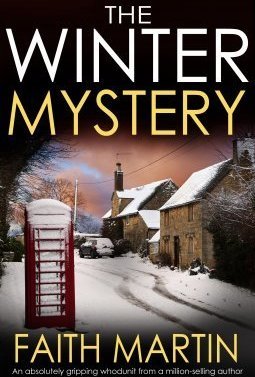
The Winter Mystery
Book
THE WINTER MYSTERY by Faith Martin Discover a new series of whodunits by million-selling author...
Contemporary Fiction Crime Mystery Whodunit
Rachel King (13 KP) rated Frostbite in Books
Feb 11, 2019
I enjoyed this book nearly as much as the first one in the series, but I'm getting really frustrated with the lack of progress in Dimitri and Rose's forbidden romance. Instead, it seems to have taken a backseat to other plotlines, such as the turmoil between Rose and her mother and the political climate that Lissa is moving into. I find Rose's mother, Janine, intriguing in that she seems to be what Rose could become if Rose chooses duty over love. I sure wish that Janine would open up more since there seems to be a lot of great plot material there that was not exploited very much - Rose's black eye being a perfect example. The politics that Lissa is dealing with appear to be moving in the direction that I guessed might happen when I read the first book, which is an equalizing between the Moroi and Dhampir classes of their society, especially when it comes to dealing with the Strigoi.
Despite how Rose views Adrian, I actually rather like him. There is always something attractive about the flirty-jokester that entices women - afterall I don't know a woman who doesn't like to laugh. It's obvious that he really likes Rose and I find myself feeling sorry for him since Rose is definitely taken, even if not in the literal sense yet. Mason really ends up in the worst position, though, even if I don't include what happens to him in the end. Rose all but lies to him while he falls for her hard, all the while being the perfect gentlemen. In a way, Mason and Adrian are opposite in styles, and yet Rose is blind to both - not that I blame her, as she likes to say, "Dimitri is a badass." Why is it that female protagonists always seem to have hords of guys going after them? (Think - Twilight saga, Rachel Morgan series, Mercy Thompson series, House of Night series, etc.)
I wish that Rose's nazar could be explained a bit more, as there seems to be more to it than anyone is discussing. Adrian knows things that he is not spilling, and Janine sure is tight-lipped about most of her life, excluding what she does in the line of duty.
Despite how Rose views Adrian, I actually rather like him. There is always something attractive about the flirty-jokester that entices women - afterall I don't know a woman who doesn't like to laugh. It's obvious that he really likes Rose and I find myself feeling sorry for him since Rose is definitely taken, even if not in the literal sense yet. Mason really ends up in the worst position, though, even if I don't include what happens to him in the end. Rose all but lies to him while he falls for her hard, all the while being the perfect gentlemen. In a way, Mason and Adrian are opposite in styles, and yet Rose is blind to both - not that I blame her, as she likes to say, "Dimitri is a badass." Why is it that female protagonists always seem to have hords of guys going after them? (Think - Twilight saga, Rachel Morgan series, Mercy Thompson series, House of Night series, etc.)
I wish that Rose's nazar could be explained a bit more, as there seems to be more to it than anyone is discussing. Adrian knows things that he is not spilling, and Janine sure is tight-lipped about most of her life, excluding what she does in the line of duty.

